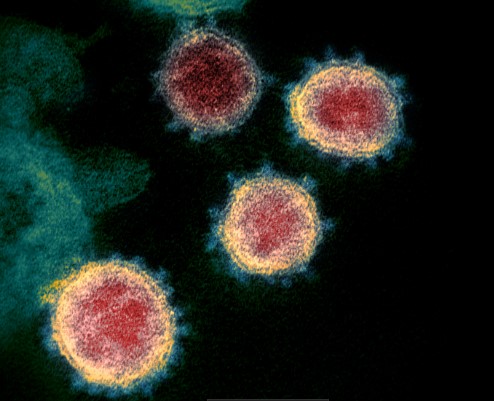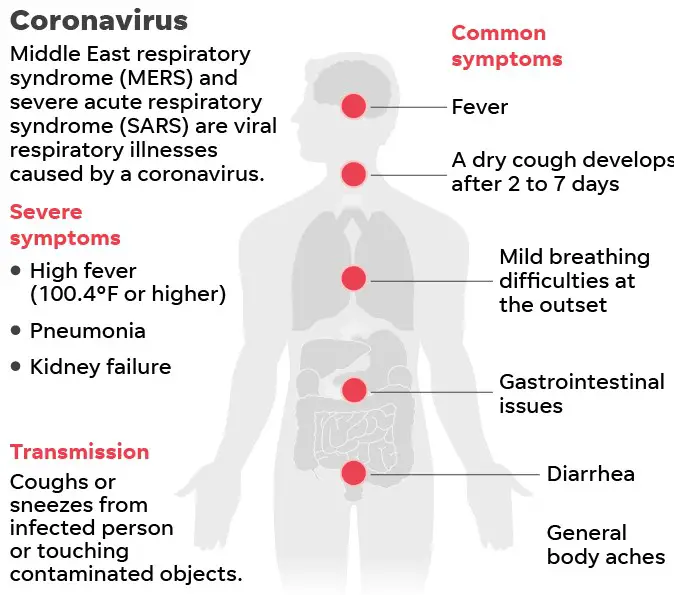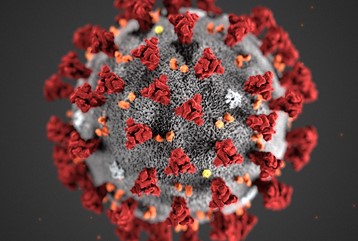Viruses are ubiquitous and diverse pathogens that affect human health globally. The emergence of new viral diseases poses a constant challenge to public health, exemplified by the outbreak of SARS in the early 2000s and the more recent global spread of the novel coronavirus. Both events have underscored the critical need for a deep understanding of viral diseases and their implications on society.
The difference between coronavirus and SARS primarily lies in their genetic characteristics and the outbreaks they cause. Coronavirus is a broad category of viruses that can cause diseases ranging from the common cold to more severe ailments like MERS and COVID-19. SARS, or Severe Acute Respiratory Syndrome, is a specific type of coronavirus that was identified in a 2003 outbreak. Despite both being coronaviruses, they differ significantly in their infectiousness, symptoms, and global impact.
Highlighting these differences is essential not just for academic purposes but also for practical, preventative healthcare. As these viruses continue to pose significant global health risks, understanding their nuances can lead to better management and prevention strategies, enhancing our preparedness for future outbreaks.

Virus Basics
What is a Virus?
A virus is a microscopic infectious agent that can only replicate inside the living cells of an organism. Viruses can infect all types of life forms, from animals and plants to microorganisms, including bacteria and archaea. They consist of genetic material, either DNA or RNA, surrounded by a protective coat of protein called a capsid. Some viruses also have an outer layer called an envelope.
Virus Classifications
Viruses are categorized into families based on their genetic structure, replication method, and the type of diseases they cause. Major families include:
- Adenoviridae: Commonly causes respiratory illnesses in humans.
- Herpesviridae: Known for causing herpes, chickenpox, and shingles.
- Flaviviridae: Includes viruses like West Nile and Zika.
- Coronaviridae: Responsible for diseases like SARS, MERS, and COVID-19.
Coronavirus Overview
Origins of Coronavirus
Coronaviruses are a large family of viruses known to cause illness in animals and humans. In humans, several coronaviruses are known to cause respiratory infections ranging from the common cold to more severe diseases such as Middle East Respiratory Syndrome (MERS) and Severe Acute Respiratory Syndrome (SARS).
Brief History
The earliest known coronavirus infected chickens in the 1930s. Human coronaviruses were first identified in the 1960s with common strains including 229E and OC43. More severe outbreaks, such as SARS in 2003, have prompted increased scrutiny and research into coronaviruses.
Recent Outbreaks
The most notable recent outbreak is the global pandemic of COVID-19, caused by the novel coronavirus SARS-CoV-2, first identified in Wuhan, China, in December 2019. This outbreak has led to significant global social and economic disruption.
Coronavirus Traits
Structure and Genetics
Coronaviruses are characterized by their crown-like appearance under a microscope due to the spike proteins on their surface. They have a positive-sense single-stranded RNA genome.
How it Spreads
Transmission of coronaviruses is primarily through respiratory droplets from coughs and sneezes. It can also spread by touching surfaces contaminated with the virus, and then touching the face.
Common Symptoms
Symptoms of coronavirus infections can vary but typically include fever, cough, and shortness of breath. In more severe cases, infection can cause pneumonia, severe acute respiratory syndrome, and even death.
SARS Explained
What is SARS?
Severe Acute Respiratory Syndrome (SARS) is a viral respiratory illness caused by a coronavirus, known as SARS-associated coronavirus (SARS-CoV).
Definition and Outbreak History
SARS was first recognized as a distinct strain of coronavirus in 2003. The outbreak began in the Guangdong province of southern China in 2002, eventually spreading to more than two dozen countries in North America, South America, Europe, and Asia before the SARS global outbreak of 2003 was contained.
SARS Characteristics
Viral Structure
SARS-CoV is characterized by a unique corona or “crown” of sugary proteins that protrude from the envelope of the virus. This structure assists the virus in its ability to attach to and enter host cells.
Modes of Transmission
SARS spreads primarily through respiratory droplets that enter the air when someone with the disease coughs or sneezes.
Symptoms and Effects
The symptoms of SARS include fever, malaise, muscle pain, headache, diarrhea, shivering, and more severely, pneumonia and respiratory distress.
Comparative Analysis
Virus Structures
Coronavirus and SARS-CoV share similar structures but have genetic differences that affect their transmissibility and virulence. SARS-CoV has a unique spike protein that allows it to bind more tightly to human cells compared to other coronaviruses.
Transmission Paths
Both viruses are transmitted through respiratory droplets and contact with contaminated surfaces. However, SARS-CoV-2, the virus causing COVID-19, has a higher rate of transmission, partly due to the viral load in the upper respiratory tract and its ability to infect others before symptoms appear.
Symptoms Comparison
While both cause respiratory symptoms, COVID-19 has a broader range of symptoms and potential for asymptomatic spread, which differentiates it from SARS, which is more likely to cause severe respiratory symptoms in those infected.

Impact Assessment
Global Health Effects
Impact on Healthcare Systems
The global outbreaks of coronavirus and SARS have significantly strained healthcare systems worldwide. Hospitals often find themselves overwhelmed, dealing with a surge in patients while facing shortages in staff, protective gear, and critical equipment such as ventilators. The high infection rates among healthcare workers have compounded these challenges, forcing many facilities to adopt emergency protocols and shift resources from non-urgent care to focus on outbreak responses.
Economic Consequences
The economic impact of viral outbreaks like SARS and coronavirus extends beyond healthcare costs. Industries such as travel, tourism, and hospitality have faced severe downturns due to travel restrictions and reduced consumer confidence. The broader economic effects include job losses, a decrease in consumer spending, and disruptions to supply chains, leading to a significant downturn in global economic growth.
Response and Management
Vaccination and Treatments
Efforts to manage outbreaks include the rapid development and deployment of vaccinations and treatments. For COVID-19, several vaccines have been developed at unprecedented speeds, offering hope for controlling the pandemic. Antiviral treatments and supportive care measures continue to evolve, improving patient outcomes over time.
Public Health Policies
Governments and health organizations have implemented a range of public health policies to manage the spread of viruses. These include travel bans, social distancing measures, and mandates for mask-wearing. Public health campaigns focus on educating the public about the virus and promoting behaviors that reduce transmission.
Preventive Measures
Personal Safety
Individuals are encouraged to adopt several safety measures to protect themselves and others:
- Hygiene practices: Regular handwashing with soap and water for at least 20 seconds, using hand sanitizer when soap and water are not available.
- Use of masks and sanitizers: Wearing masks in public spaces and using hand sanitizers frequently to kill the virus particles on hands.
Community Strategies
Community-wide strategies are critical in preventing the spread of viruses:
- Quarantine measures: Mandatory quarantine for infected individuals or those who have been in contact with infected persons helps to limit the virus’s spread.
- Travel restrictions: Limiting travel, especially to areas with high infection rates, reduces the risk of importing new cases into unaffected areas.
Future Outlook
Research Developments
Ongoing research into viruses like SARS and coronavirus is crucial. Scientists continue to study these viruses to understand their behavior, how they mutate, and how they interact with the human immune system. This research is vital for developing effective treatments and vaccines.
Advances in Medical Research
The response to recent outbreaks has accelerated innovations in medical research, including the use of artificial intelligence in drug discovery and the development of mRNA vaccines, which are quicker to produce than traditional vaccines.
Predictions and Preparations
Experts are working on models to predict how and when future outbreaks might occur and preparing accordingly. Preparation includes improving the global capacity for vaccine production, enhancing surveillance systems, and creating more robust health infrastructure to better manage future outbreaks.
FAQs
What is a Coronavirus?
A coronavirus belongs to a family of viruses known for containing strains that cause potentially lethal diseases in mammals and birds. In humans, they can induce a spectrum of respiratory ailments, ranging from the common cold to more severe diseases such as MERS and COVID-19.
How did SARS spread among humans?
SARS primarily spread among humans through direct contact with respiratory droplets from infected individuals. It also spread by touching surfaces contaminated with the virus, followed by touching one’s face, particularly the mouth, nose, or eyes.
Are SARS and COVID-19 caused by the same virus?
No, SARS and COVID-19 are caused by different viruses. The virus responsible for SARS is known as SARS-CoV, which appeared in 2002, while COVID-19 is caused by SARS-CoV-2, which emerged in late 2019. Although related, the two viruses are genetically distinct.
What are the typical symptoms of coronavirus?
Symptoms of coronavirus infections can vary depending on the specific virus. Common symptoms include fever, cough, and breathing difficulties. More severe cases can cause pneumonia, severe acute respiratory syndrome, kidney failure, and even death.
How can coronavirus infections be prevented?
Preventing coronavirus infections involves practicing good hygiene, such as frequent hand washing, using hand sanitizers, and avoiding close contact with people who are sick. Wearing masks in crowded places and maintaining social distancing are also crucial preventive measures.
Conclusion
The distinctions between coronavirus and SARS highlight the complex nature of viral pathogens and their impact on global health. By understanding these differences, health professionals can tailor prevention and treatment strategies more effectively and mitigate the risks associated with outbreaks. This knowledge is not just crucial for handling current pandemics but also for preparing for future viral challenges.
As the world continues to grapple with the implications of viral outbreaks, the lessons learned from studying the differences between coronavirus types are invaluable. They reinforce the necessity for ongoing research, surveillance, and global cooperation in the fight against infectious diseases.

